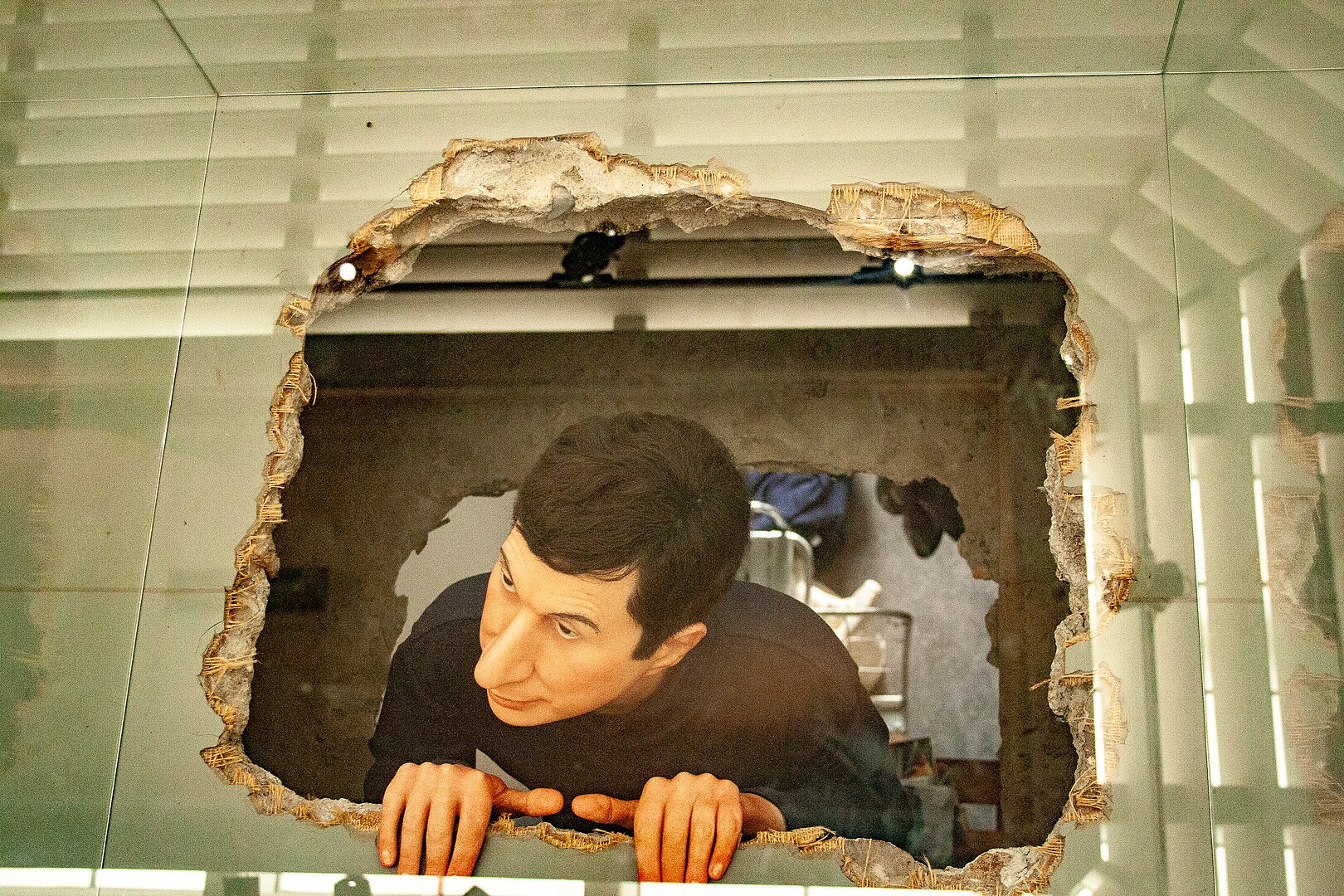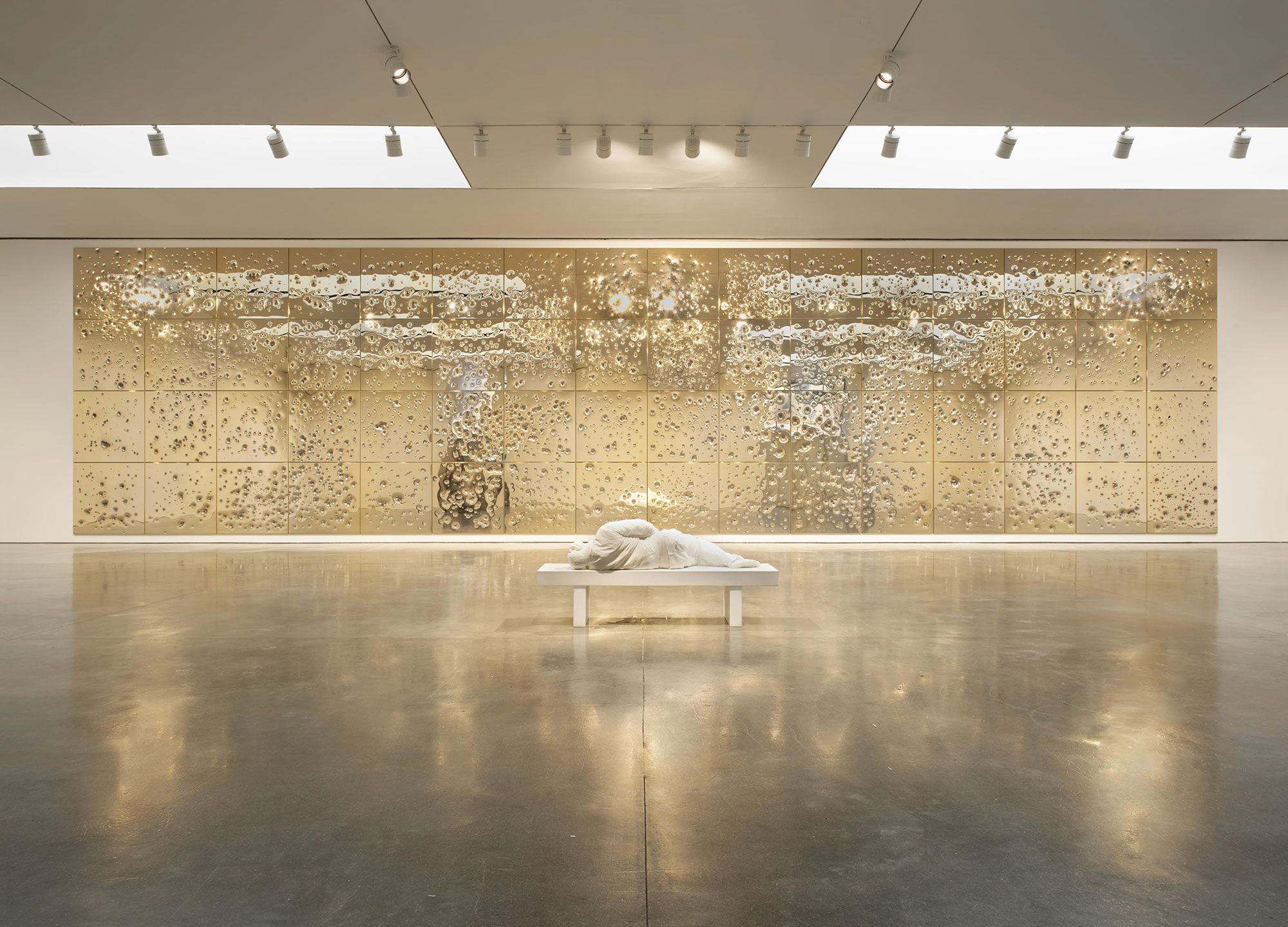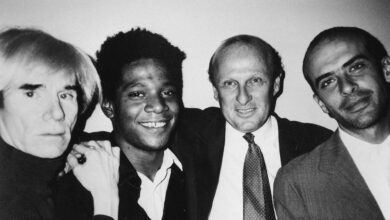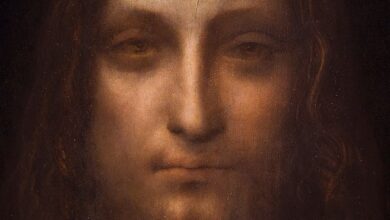The Artist of Paradox
Maurizio Cattelan, one of the most provocative and enigmatic figures in contemporary art, has spent decades challenging the boundaries of what art can be. Born in Padua, Italy, in 1960, Cattelan is known for his irreverence and audacity. His works are at once humorous, unsettling, and deeply reflective of societal contradictions. For example, his infamous banana duct-taped to a wall (Comedian) and his satirical sculpture La Nona Ora, depicting Pope John Paul II struck by a meteorite, exemplify this duality. These pieces invite both laughter and discomfort. They also force audiences to confront their complicity in the systems he critiques.
In his latest exhibition, Sunday, presented at Gagosian in New York, Cattelan returns for his first solo show in the city in over two decades. The works on display are no less provocative. They offer biting commentary on themes such as wealth, violence, and societal neglect. Curated by Francesco Bonami, this exhibition further cements Cattelan’s reputation as a master provocateur. It highlights his ability to make the invisible visible.

This life-size sculpture is a self-portrait. The artist looks up through a hole in the floor. The room below appears to be a storage room but is, in fact, the staff cloakroom. Here, Cattelan plays a convincing game with reality and imitation, undermining the viewer’s expectations. “Museum Boijmans Van Beuningen 2009-02-15 – interior – 02,” by Unknown author, licensed under CC BY-SA 4.0 via Wikimedia Commons.
Confronting Wealth and Violence in “Sunday”
Maurizio Cattelan’s Sunday is a visceral, gold-drenched critique of contemporary society. The piece draws its power from juxtaposition. The centerpiece of the exhibition is a monumental wall installation: 64 stainless steel panels plated in 24-karat gold, each riddled with bullet holes. The title piece, Sunday, is both dazzling and disturbing. The reflective gold surface mirrors the viewer, implicating them in the work’s violent narrative. However, the bullet holes interrupt the grandeur. They serve as a stark reminder that wealth and destruction often walk hand in hand.
The installation captures the fragility of luxury and the ubiquity of violence. This is particularly true in the United States, where firearms are as accessible as the opulence depicted in the work. Standing before this piece, viewers confront a distorted version of themselves. They are both complicit in and powerless against the systems Cattelan critiques.
A second piece, November, is equally disarming. It features a marble sculpture of a homeless man urinating on the gallery floor. This work confronts the audience with a stark reminder of economic inequality. The figure, rendered in a classical style, feels both timeless and contemporary. It grounds a global issue in the here and now. The juxtaposition of wealth, embodied by the gilded gallery, and the harsh reality of homelessness forces viewers to question societal structures. These are the very structures that sustain such disparities.

Installation view, Maurizio Cattelan: Sunday, Gagosian, West 21st Street, New York. Artwork © Maurizio Cattelan. Photo: Maris Hutchinson
Cattelan’s Controversial Legacy
As with much of Cattelan’s work, Sunday has not been without its controversies. Allegations of idea appropriation have surfaced, with fellow artist Anthony James accusing Cattelan of mimicking his mirrored steel panels. While these claims add another layer of intrigue, they also underscore the broader tensions in the art world. These tensions often lie between originality and influence.
Cattelan’s work has always thrived on this edge. He toes the line between critique and complicity. This exhibition, like his previous endeavors, forces us to confront not only the systems he critiques but also the mechanisms of the art world that sustain him.
Conclusion
Maurizio Cattelan’s Sunday at Gagosian is both a continuation of his legacy and a bold step into new territory. With its striking visuals and biting commentary, the exhibition challenges audiences to reflect on the fragility of wealth, the pervasiveness of violence, and the glaring inequalities of contemporary society. Cattelan remains an artist of paradoxes. He mocks and memorializes. He critiques and remains complicit. Yet, he always demands attention.
For those willing to confront the uncomfortable truths he presents, Sunday offers an unforgettable experience. It is an experience that lingers long after leaving the gallery.




